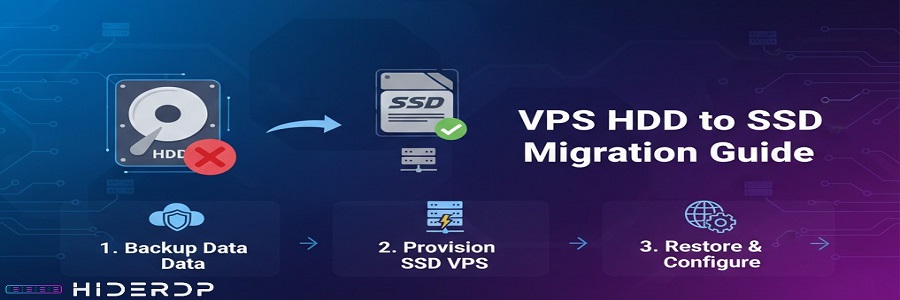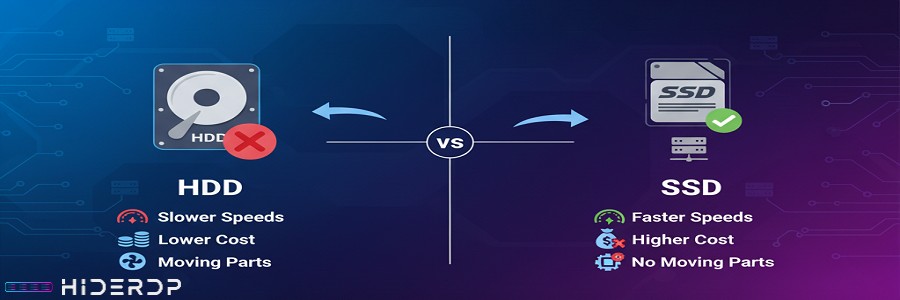Navigating the process of upgrading your Virtual Private Server (VPS) from a traditional Hard Disk Drive (HDD) to a Solid-State Drive (SSD) can seem daunting. However, the benefits are immense. An SSD significantly boosts performance, offering faster boot times, quicker application loading, and a more responsive user experience.
This comprehensive Guide for HDD to SSD Migration will walk you through the essential steps to make the transition smoothly and efficiently, ensuring you vps hdd to ssd migration guide free from common pitfalls.
Guide for HDD to SSD Migration
Before you begin, it’s crucial to prepare. The first step in this Guide for HDD to SSD Migration is to back up all your data. While the migration process is generally safe, unexpected issues can occur. Use a reliable backup solution to create a full snapshot of your VPS. This ensures your data is safe and provides a rollback option if something goes wrong.
Once your data is secure, you can proceed with confidence.
The migration process often involves creating a new SSD-based VPS and then transferring your data. Many hosting providers offer tools or support for this. You might also consider using a server management panel like cPanel or Plesk, which often have built-in backup and restore functions.
For those who want to vps hdd to ssd migration guide free of external tools, a manual transfer is an option. This involves a more technical process of copying files via SSH and reconfiguring services.
VPS HDD to SSD Migration Guide Free
The core of a successful migration is the data transfer. A common method is to use a tool like rsync for Linux-based systems. This command-line utility is perfect for copying files and directories, preserving permissions and ownership.
By running a series of rsync commands, you can systematically copy all your websites, databases, and application files from the old HDD to the new SSD server. This is a key part of our vps hdd to ssd migration guide free of complex proprietary software.
Another important step is reconfiguring your services. After the data is transferred, you’ll need to update DNS records to point to the new SSD server’s IP address. This is a critical step to ensure your websites and applications remain accessible to users.
You also need to re-install and configure all your software, including web servers (like Nginx or Apache), databases (like MySQL or PostgreSQL), and any other applications. This meticulous approach is vital to a smooth transition.

A Practical Guide to HDD to SSD Migration
After the migration is complete, the final step is to test everything thoroughly. Check that your websites are loading correctly, applications are running as expected, and all functionalities are working properly. Look for any broken links or missing files. Once you are confident that the new server is fully operational, you can proceed to shut down the old HDD-based VPS.
This final verification is a crucial component of any successful migration. Following this Guide for HDD to SSD Migration, you can complete the process without a hitch.
Ultimately, this vps hdd to ssd migration guide free of charge shows that upgrading your VPS from HDD to SSD is a manageable process that can lead to significant performance gains. While it requires careful planning and execution, the end result is a faster, more reliable server that will benefit both you and your users.
Troubleshooting Your Migration: Common Pitfalls and Solutions
Even with a detailed guide, you might encounter issues during the migration. Here are some of the most common problems and how to solve them.
- Problem: File Permissions Are Incorrect. After transferring files, you may find that your websites or applications aren’t working because of incorrect file permissions.
- Solution: When using
rsync, make sure you use the-aor--archiveflag. This flag preserves permissions, ownership, and other crucial attributes of your files. If you’ve already transferred the files, you may need to manually adjust permissions using thechmodandchowncommands.
- Solution: When using
- Problem: My Site Is Down After Changing DNS. DNS propagation can take some time. After you update your DNS records to point to the new server’s IP, it won’t be immediate for everyone.
- Solution: This is a key vps hdd to ssd migration guide free tip: lower the TTL (Time to Live) on your DNS records to a very short period (e.g., 300 seconds) a few hours before you start the migration. This will force DNS resolvers to update more quickly.
- Problem: The Database Won’t Connect. Database configuration files might point to the old server’s location, or the database user permissions might be incorrect on the new server.
- Solution: Make sure your application’s database configuration file has the correct login credentials and server IP address. Additionally, ensure you properly exported and imported your database. Using tools like
mysqldumpandmysqlis the most reliable way to handle this.
- Solution: Make sure your application’s database configuration file has the correct login credentials and server IP address. Additionally, ensure you properly exported and imported your database. Using tools like
By understanding these potential issues and their solutions, you can confidently vps hdd to ssd migration guide free yourself from stress and ensure a smooth and successful upgrade. The effort you put in to prepare and troubleshoot will pay off with a significant boost in performance and reliability.

